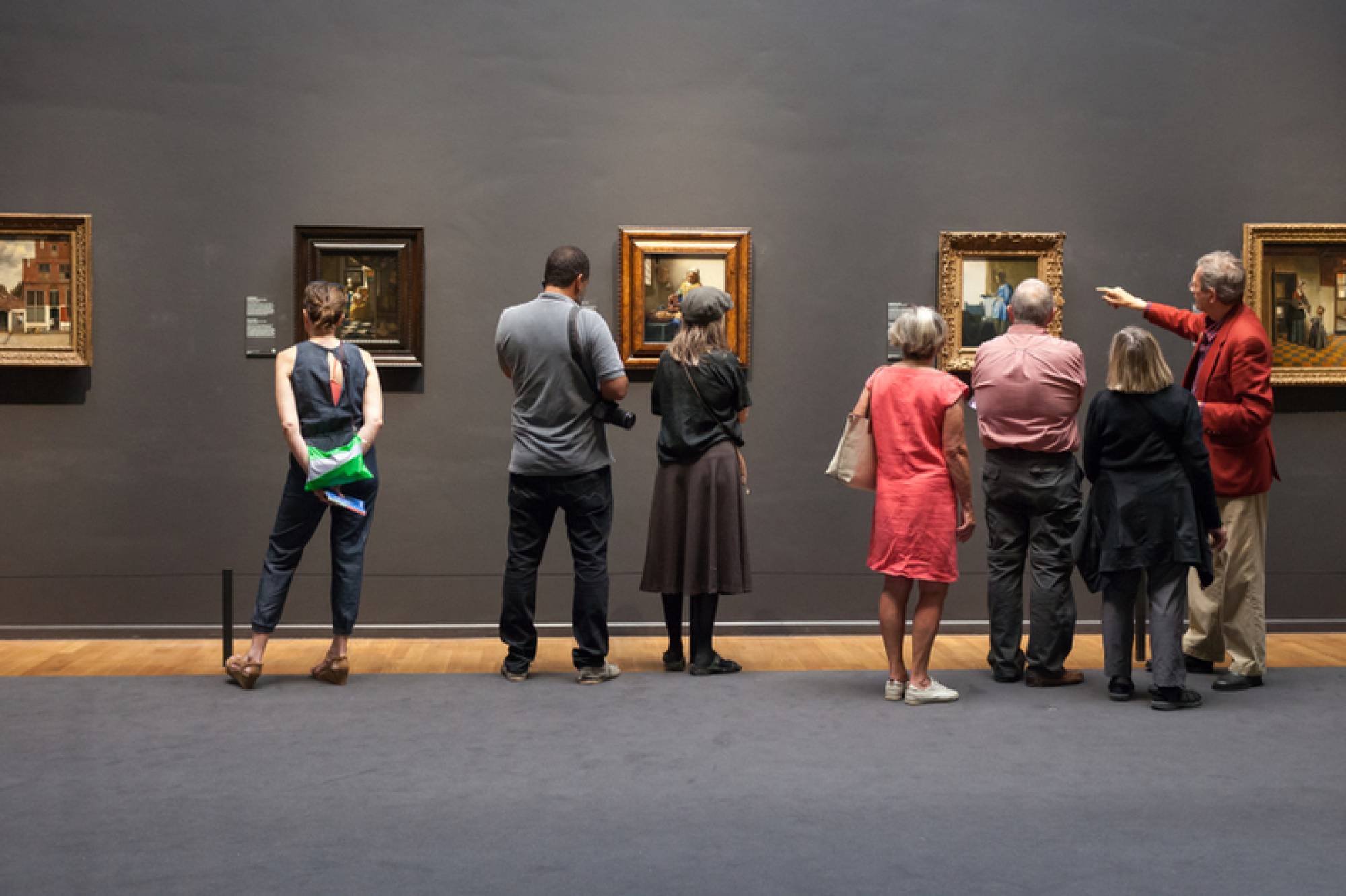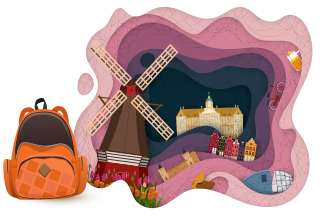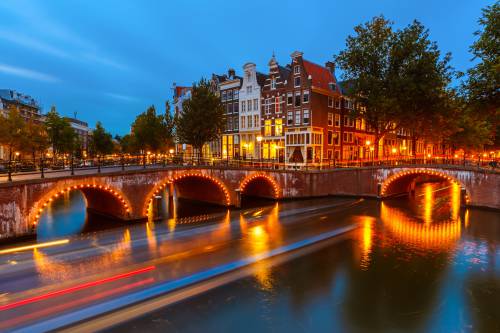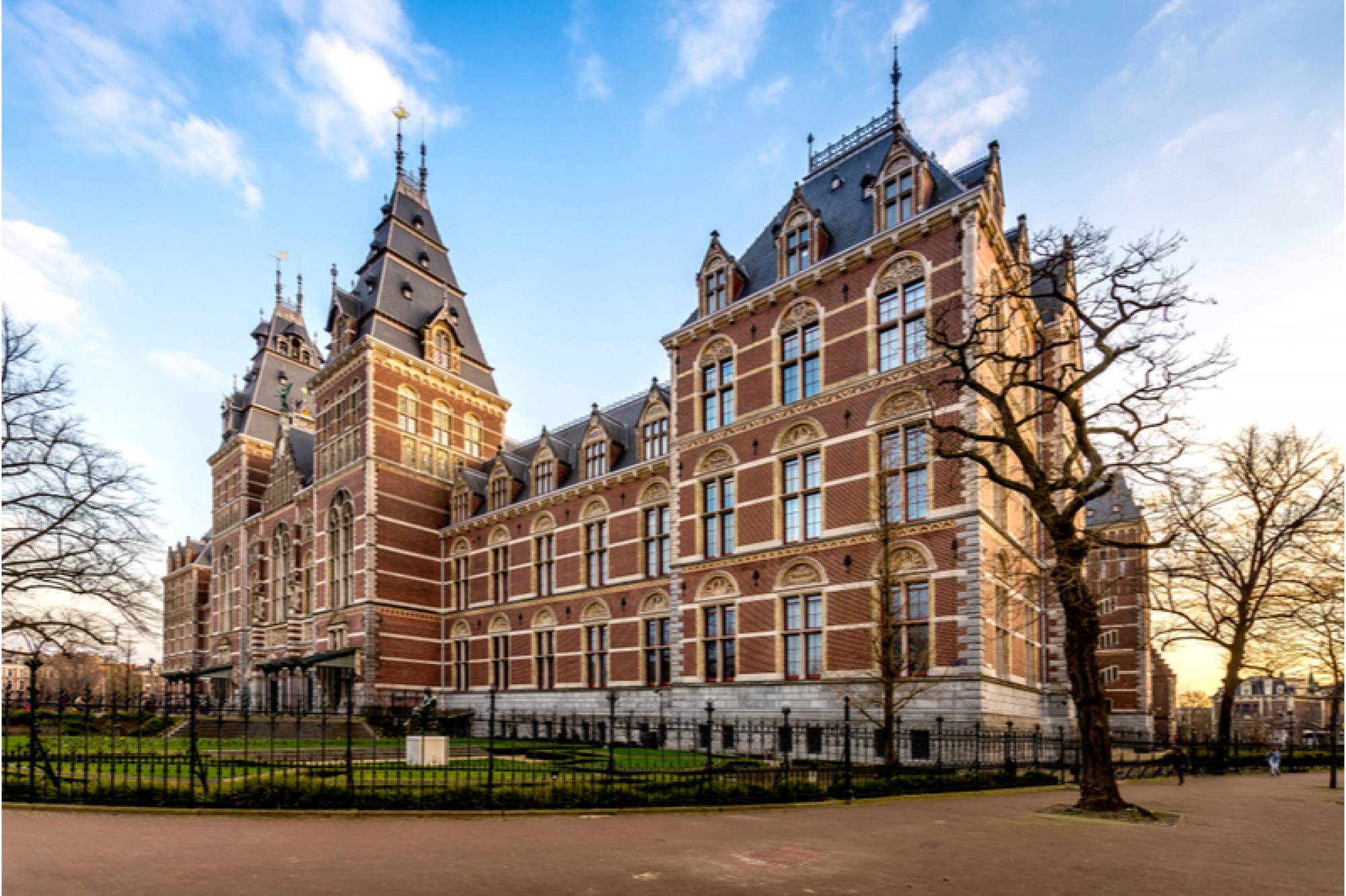
Brief History of the Rijksmuseum
The museum’s foundational collection was originally exposed in the Nationale Konst-Gallerij in The Hague. This was the first French-modelled museum in the Netherlands, geared toward instilling patriotism among Dutch people. However, during Napoleon’s rule, the collection was moved to the Royal Palace of Amsterdam in 1808, where many of today’s renowned paintings were already on display.
When Napoleon fell, the collection was moved to the Trippenhuis in Amsterdam, where it resided until the Rijksmuseumgebouw opened its doors in 1885. On the eve of the Second World War, the Dutch had learned from their past and successfully hid most of the valuable collection in the mountain tunnel vaults of the Sint-Pietersberg in Maastricht.
Architecture and design
In the past, the architectural wonder of the Rijksmuseumgebouw served simultaneously as a city gate, which is why there is still a street running right through the building. Until 1931, this street was even open for cars, but since this was far from ideal for the expositions, it was repurposed to a dedicated fietspad (bike road).
Due to the Rijksmuseum’s popularity, the Rijksmuseumgebouw underwent many expansions that undermined the original design by P.J.H. Cuypers. Luckily, a total of €375 million was accumulated to restore it to its intended glory during renovations lasting from 2003-2013. The result is a 1.5-kilometer walking route of historical glory that passes through 80 gallery halls.
During the renovations, part of the collection was moved to Schiphol airport, where it continues to be on display today. This exposition is behind the customs clearance, which means that it is only visible for travelers – an airport feature that Schiphol was the first in the world to host.
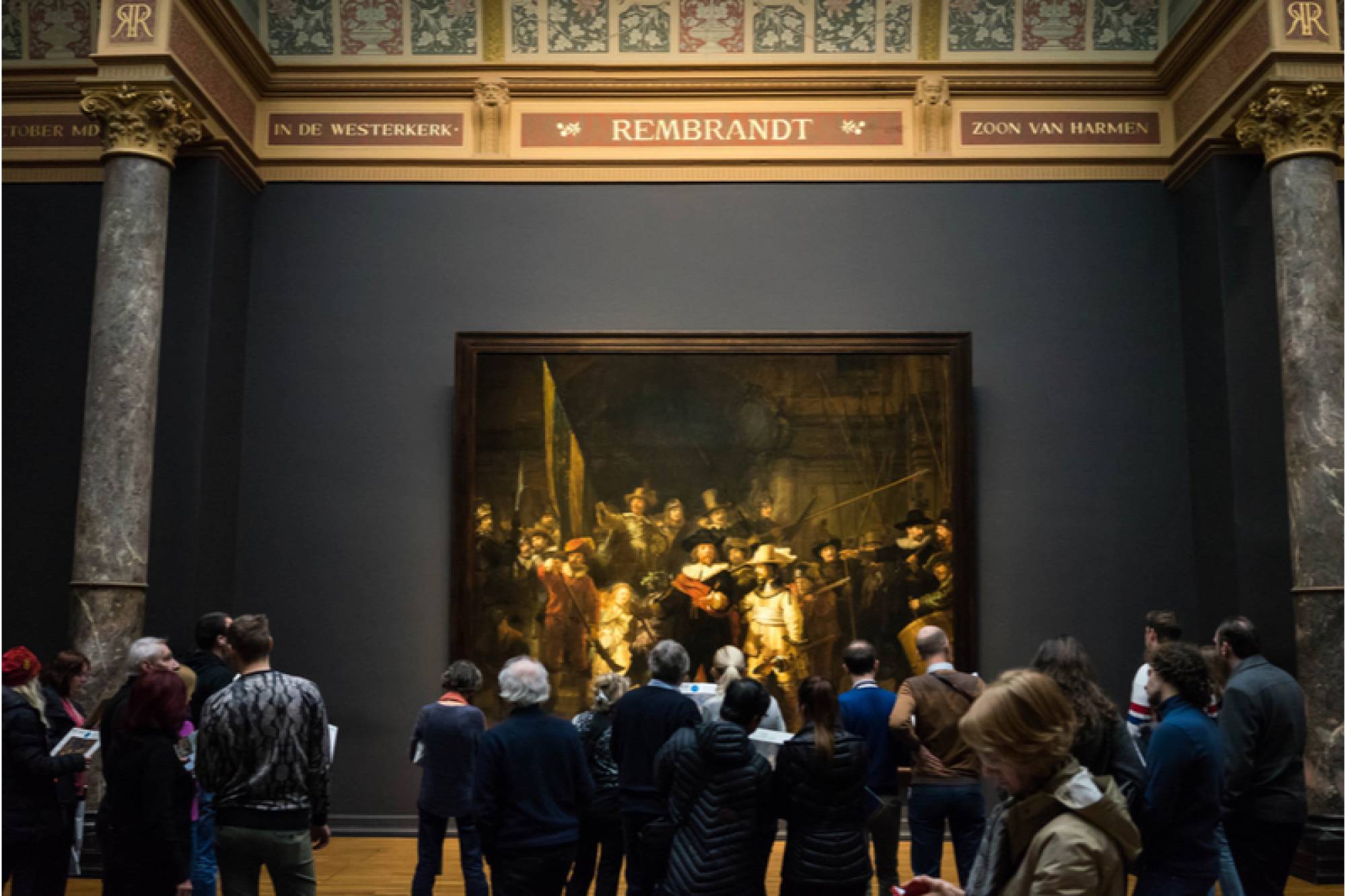
The Rijksmuseum collection
In the Rijksmuseum, there are more than 1 million artworks ranging from 1200 to the present. This impressive collection ranges from Dutch Masters paintings such as Rembrandt van Rijn and Frans Hals to political and military history artefacts such as ship models, flags, weapons, and silver and gold objects from the 17th and 18th century.
Furthermore, there is a Sculpture and Crafts collection with furniture, carpentry, ceramics, etc.; the national collection of drawing, print, and photo art of the Rijksprentenkabinet; and finally, even an Asian art collection displaying the development of Indian, Chinese, Indonesian, and Japanese art from an Asian perspective.
In addition to the Rijksmuseum collection, also the biggest art library of the country is located inside the Rijksmuseumgebouw. This library is freely accessible to everyone and even if you don’t care about the contents, its beautiful architecture makes it worth a visit all by itself already!
Visitors
Due to the combination of a uniquely varied collection and its impressive architecture, the Rijksmuseum won the 2015 European Museum of the Year Award. Since its restoration to full glory, the Rijksmuseum welcomes over 2 million annual visitors. Although the Dutch still form the bulk of visitors, the Rijksmuseum is increasingly attracting more foreigners, mostly American tourists, closely followed by Germans.
That is, up until the corona measures forced its doors shut of course. Luckily, in a spirit true to its credo “the modern Rijksmuseum is a museum of and for everyone,” much of its collection can be visited online. With 700.000 high-resolution artworks freely accessible, there is in fact far more to see online than the roughly 8.000 artworks exposition in the building. In this, you can even use existing pieces to create your own art, and programmers can use over 500.000 images for their applications.
Want some suggestions to start your online museum tour with? Look at Jan Steen’s The Feast (1665-1668) and see if you can spot the delicious-looking stroopwafel, and study Winter Landscape with Ice Skaters (1608) by Hendrick Avercamp’s for the myriad activity and little details that characterize the playful yet brutal life of the 17th century.
